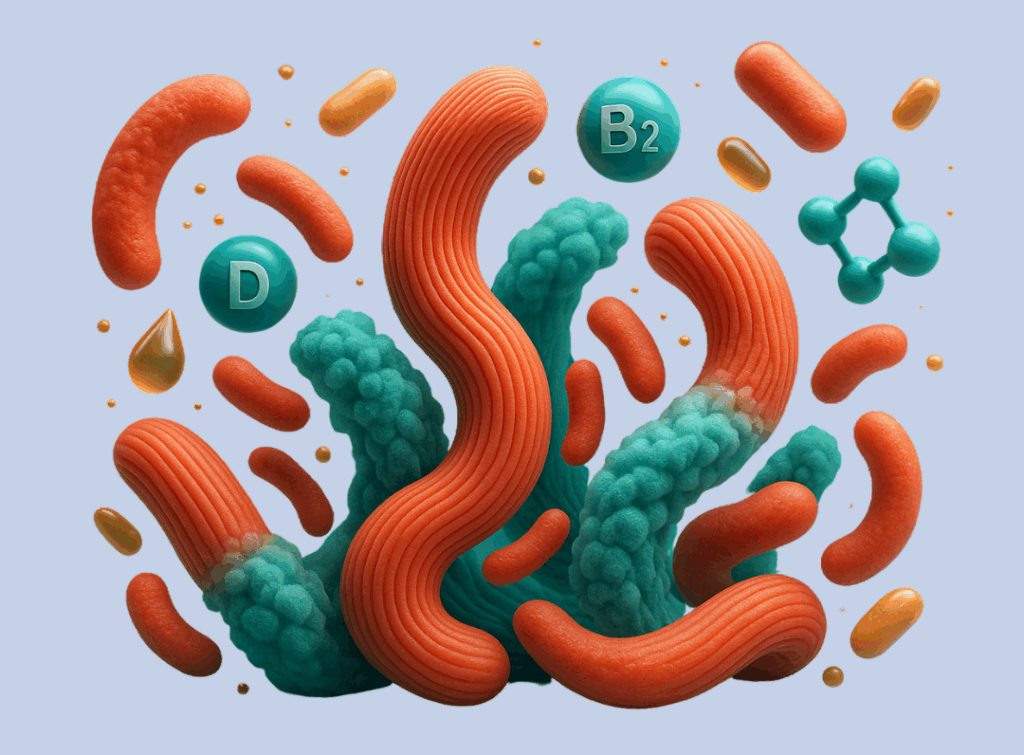Article Overview
Authors: A. Monleón-Getino, G. Pujol-Muncunill, J. Méndez Viera, L. Álvarez Carnero, W. Sanseverino, A. Paytuví-Gallart, J. Martín de Carpí
Affiliations:
- Department of Genetics, Microbiology and Statistics, Universitat de Barcelona, Barcelona, Spain
- GRBIO, Research Group in Biostatistics and Bioinformatics, Barcelona, Spain
- BIOST3, Research Group in Biostatistics, Data Science and Bioinformatics, Barcelona, Spain
- Unit for the Comprehensive Care of Paediatric Inflammatory Bowel Disease, Paediatric Gastroenterology, Hepatology and Nutrition Department, Hospital Sant Joan de Déu, Barcelona, Spain
- Sequentia Biotech SL, Barcelona, Spain
Publication Journal: Frontiers in Pediatrics
Date of Publication: 16 November 2023
Link: https://doi.org/10.3389/fped.2023.1220976
How Gut Bacteria Could Hold Answers to Pediatric IBD
Inflammatory bowel diseases (IBD), including Crohn’s disease (CD) and ulcerative colitis (UC), are chronic inflammatory conditions of the gastrointestinal tract that affect millions worldwide. Alarmingly, the incidence in children is increasing rapidly, with paediatric cases now accounting for around 25% of all IBD diagnoses. The gold-standard tests are invasive and stressful, especially for young patients. That’s why scientists are searching for new, gentler ways to understand what’s going on inside a child’s gut.
A recent pilot study, supported by Sequentia Biotech’s advanced bioinformatics enabling technologies, shines a hopeful light on a new approach: metagenomics, the study of microbial communities through their genetic material. The goal? To identify microbial biomarkers that could lead to earlier and less invasive diagnosis of IBD in children.
A Microbial Fingerprint of Disease
Every person’s gut hosts a unique mix of microbes—bacteria, viruses, and fungi working together (or not). In this pilot study, researchers looked at stool and saliva samples from children with newly diagnosed IBD and compared them to samples from healthy kids. What they found was striking: children with IBD had a distinct microbial “fingerprint,” characterized by fewer beneficial bacteria and some types appearing more frequently, such as Streptococcus sanguinis.
Even more interesting? After starting treatment, some children showed signs of their microbiome returning to a more balanced state, suggesting that metagenomics could also help monitor the effectiveness of treatments.
Why This Matters for Kids
A faster, less invasive way to diagnose IBD would be life-changing for children and their families. Instead of relying on symptoms and uncomfortable tests, doctors could one day use a simple stool or saliva sample to catch signs of IBD early and start treatment sooner.
Metagenomics also opens the door to personalised medicine, where treatments are tailored to each child’s unique microbiome. And as this research grows, it could help doctors understand not just IBD, but a range of digestive and immune-related conditions that start in the gut.
The Future Looks Microbial
This pilot study is just the beginning. Further research is needed, particularly with larger patient groups. But it’s a promising step toward better tools for diagnosis and care. Moreover, this study reinforces the growing importance of integrating bioinformatics into clinical research, bridging the gap between raw biological data and real-world healthcare applications.
Thanks to advances in metagenomics and bioinformatics platforms in helping make sense of the microbiome’s hidden patterns, we’re closer than ever to understanding what’s really going on in children’s guts—and how to help them feel better, faster.
Sometimes, the tiniest organisms have the biggest stories to tell.
And thanks to metagenomics, we’re finally learning how to listen.
Reference:
A. Monleón-Getino, G. Pujol-Muncunill, Viera, J. M., Carnero, L. Á., Sanseverino, W., A. Paytuví-Gallart, & de, M. (2023). A pilot study of the use of the oral and faecal microbiota for the diagnosis of ulcerative colitis and Crohn’s disease in a paediatric population. Frontiers in Pediatrics, 11.









